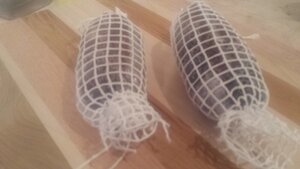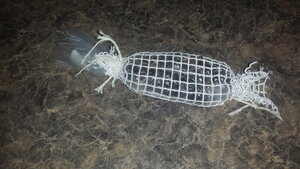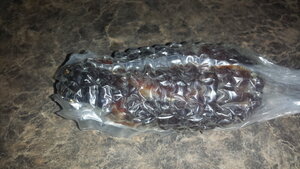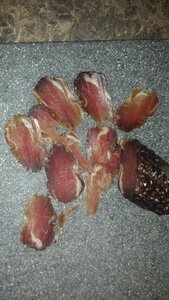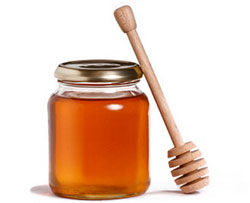pH in the intestinal tract can range between 5.5 to 7.5....
In the stomach, several factors can raise the pH... Just as some have noted, "drinking a glass of orange juice can lower the stomach pH to have a detrimental effect on the "bad" bacteria one may ingest"... BTW, I have used that remedy when some food I ate caused severe discomfort, and it worked almost immediately...
By
Anne Marie Helmenstine, Ph.D.
Updated February 21, 2020
Your stomach secretes hydrochloric acid, but the pH of your stomach isn't necessarily the same as the pH of the acid.
The pH of your stomach varies, but its natural state is between 1.5 and 3.5.1 This level rises when food enters the stomach; it can reach up to six, but it lowers again throughout digestion as stomach acid is secreted.
human botulism, Clostridium botulinum, C botulinum, CB toxin, botulinum toxin, neuroparalysis, neurotoxin, food-borne botulism, FBB, wound botulism, WB

www.cdc.gov
The bacteria that make botulinum toxin are found naturally in many places, but it’s rare for them to make people sick. These bacteria make spores, which act like protective coatings. Spores help the bacteria survive in the environment, even in extreme conditions. The spores usually do not cause people to become sick, even when they’re eaten. But under certain conditions, these spores can grow and make one of the most lethal toxins known.
Luminal pH in normal small bowel and colon
Gastrointestinal luminal pH data recorded by RTC in normal volunteers are shown in table
1. Luminal pH in the proximal small bowel ranges from 5.5 to 7.0 and gradually rises to 6.5–7.5 in the distal ileum. In almost every recording published there has been a fall in luminal pH from the terminal ileum to the caecum (range 5.5–7.5); pH then rises in the left colon and rectum to 6.1–7.5.
Clostridium botulinum can grow and form toxin at pH values lower than 4.6
G J Raatjes,
J P Smelt
Abstract
It is generally accepted that in Clostridium botulinum both growth and toxin formation are completely inhibited at pH values below 4.6. This critical pH value has been confirmed by many investigators using food as substrate or culture media. Occasionally growth of C. botulinum and toxin formation at pH values lower than 4.6 have been reported. In these cases the authors ascribed the unexpected outgrowth and toxin formation to local pH differences in inhomogeneous media and growth of C. botulinum before pH equilibration, or to the fact that fungi created microenvironments within or adjacent to the mycelial mat, where the pH was higher than 4.6 as was demonstrated by Odlaug and Pflug. We show here that the general assumption that C. botulinum does not grow below pH 4.6 is incorrect. We have observed that growth and toxin formation by C. botulinum can take place in homogeneous protein rich substrates (containing 3% or more soya or milk protein) at pH values lower than 4.6.
The interaction of factors may have a positive or negative effect on the inhibition of C. botulinum. In general, proteolytic strains grow optimally at 40°C; the lower limit is 10°C, upper limit is 45-50°C. Nonproteolytic strains, including type E can continue to grow even at 3.3°C. The minimum pH range for growth of proteolytic strains is 4.6-4.8; the limit is pH 5.0 for nonproteolytic strains. However, some food proteins, such as soy and beef, may have a protective effect on C. botulinum at or below pH 4.6. In addition, certain food preparations may contain low-acid “pockets” in which the pH may be high enough to support the production of toxin.
Botulism can be controlled with awareness of the types of botulism, conditions affecting the growth of the toxin-producing spores, symptoms, treatment and prevention.

extension.colostate.edu
Canning is not the only condition in the manufacture and preservation of foods in which anaerobic conditions can develop. Smoked fish can develop anaerobic conditions in the visceral cavity and under the skin. The interior of sausage also may become anaerobic during the preservation process. Anaerobic conditions capable of supporting the growth of
C. botulinum also have developed in such foods as chopped garlic in oil, foil-wrapped baked potatoes, roasted chili peppers in plastic bags, canned cheese sauce, sauteed onions, turkey loaves, meat stews and pot pies left at room temperature or in a warming oven overnight. In these cases the original baking killed competing organisms and eliminated much of the oxygen in the micro-environment under the crust, foil or buttery coating. Subsequent storage at warm temperatures created an ideal environment for the germination and growth of botulinum spores. For these types of foods, growth of
Clostridium botulinum is inhibited by storage at a low temperature (below 38 degrees F) and/or the use of a preservative, such as sodium nitrite.



